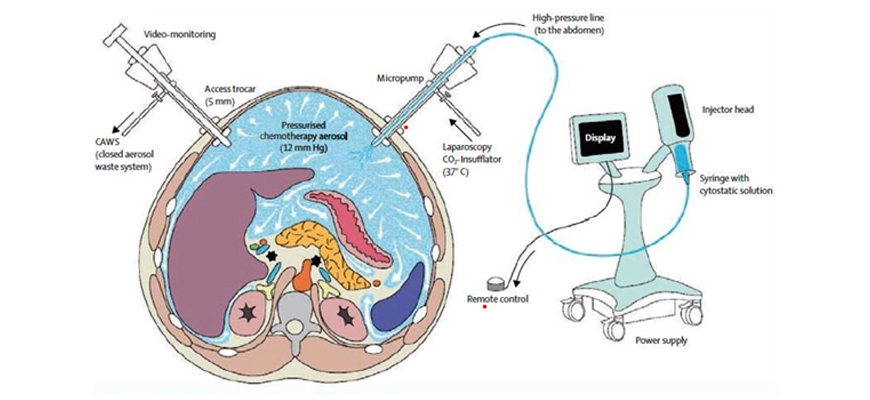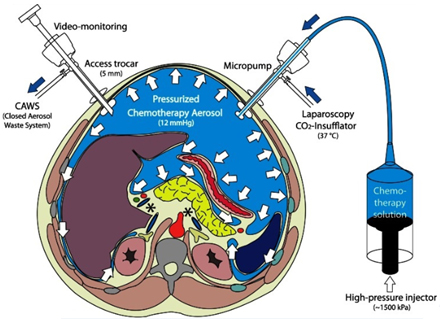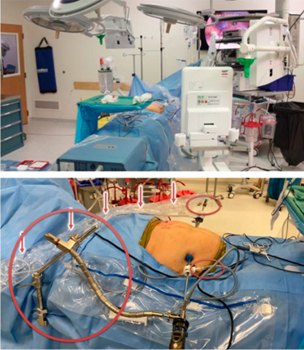
PIPAC
Pressurized Intraperitoneal Aerosol Chemotherapy (PIPAC) is a new method of delivering chemotherapy directly to the peritoneal cavity. It is a next-generation chemotherapy delivery method designed to treat cancers that spread within the abdominal cavity. It utilizes advanced technology to aerosolize chemotherapy and administer it under pressure, enhancing its effectiveness against cancer cells.
What is PIPAC?
Pressurized Intraperitoneal Aerosol Chemotherapy (PIPAC) is an innovative, minimally invasive treatment for advanced abdominal cancers. This cutting-edge technique delivers chemotherapy in aerosol form directly into the peritoneal cavity, ensuring enhanced drug distribution and penetration while minimizing systemic side effects.

Procedure :
In PIPAC, a chemotherapy vapor is generated using a special device called ‘Capnopen’ and this procedure is performed through laparoscopy. In laparoscopic surgeries, the pressure in the abdominal cavity is raised and the combined effect of this increased pressure and vaporized chemotherapy increases the drug concentration in the cancerous tissue.
A very small dose of chemotherapy is used in this method, leading to lesser side effects. The entire procedure typically takes 60–90 minutes, with minimal impact on the patient's body.

Why PIPAC?
This procedure is simpler compared to the other forms of treatment and the patient has to stay in the hospital for 2 days. Further, the side effects of the treatment are also very minimal and the recovery very quick. It has been also observed that this method has been effective even on patients who couldn’t bear through the process of systemic chemotherapy or have stopped responding to the treatment.Only 1/10th of the dose of systemic chemotherapy is used in this method, and it produces the same effect and results. Since multiple sessions of PIPAC can be given in the intervals of 6 weeks between each, it can be given alongside routine chemotherapy for better results.

Which patients benefit from PIPAC?
PIPAC is given to patients who have received chemotherapy earlier and usually more than one type of chemotherapy.
This method is actually used to control the symptoms like ascites, pain and reduce the disease burden in the cancer patient, for further treatment.
In some cases, it can be used in the neoadjuvant setting along with systemic chemotherapy. The tumor can disappear completely or may reduce drastically post PIPAC and the surgical removal of the remaining tumor can be performed effectively. These patients may experience a prolonged survival post treatment.
What are the side effects of PIPAC?
Some of the common side effects of PIPAC are abdominal pain, nausea, alteration in the liver and kidney functions. Most of these side effects resolve within a few days. More serious side effects usually do not occur with PIPAC.
